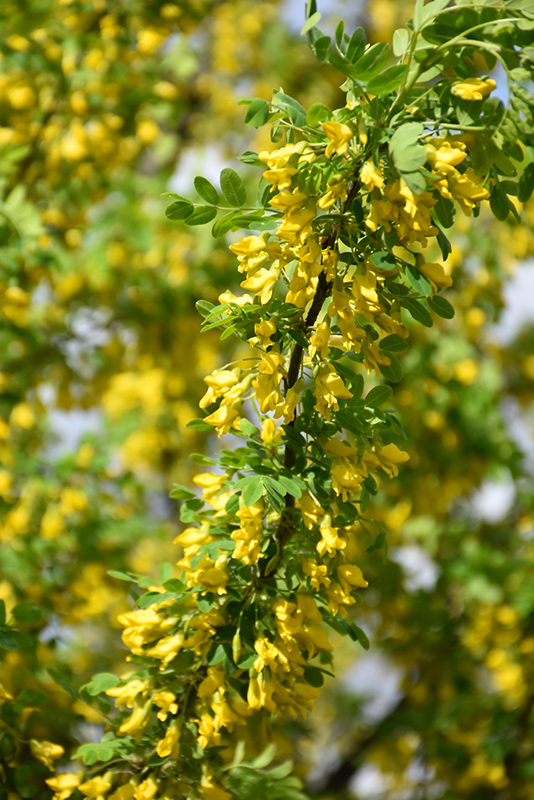Height: 12 feet
Spread: 10 feet
Sunlight:
![]()
![]()
Hardiness Zone: 1
Other Names: Siberian Peashrub, Caragana
Description:
Possibly the hardiest and toughest shrub in the world, usable in the most hostile or dry sites; showy yellow flowers in spring; makes a great hedge, plan on giving a regular pruning in any case to keep it looking neat
Ornamental Features
Peashrub has yellow pea-like flowers hanging below the branches in mid spring. It has light green deciduous foliage. The round pinnately compound leaves turn yellow in fall. The smooth olive green bark adds an interesting dimension to the landscape.
Landscape Attributes
Peashrub is an open multi-stemmed deciduous shrub with an upright spreading habit of growth. Its relatively fine texture sets it apart from other landscape plants with less refined foliage.
This shrub will require occasional maintenance and upkeep, and can be pruned at anytime. Gardeners should be aware of the following characteristic(s) that may warrant special consideration;
- Suckering
- Spiny
Peashrub is recommended for the following landscape applications;
- Hedges/Screening
- Windbreaks and Shelterbelts
- Naturalizing And Woodland Gardens
Planting & Growing
Peashrub will grow to be about 12 feet tall at maturity, with a spread of 10 feet. It tends to be a little leggy, with a typical clearance of 3 feet from the ground, and is suitable for planting under power lines. It grows at a medium rate, and under ideal conditions can be expected to live for approximately 30 years.
This shrub does best in full sun to partial shade. It prefers dry to average moisture levels with very well-drained soil, and will often die in standing water. It is considered to be drought-tolerant, and thus makes an ideal choice for xeriscaping or the moisture-conserving landscape. It is not particular as to soil type or pH, and is able to handle environmental salt. It is highly tolerant of urban pollution and will even thrive in inner city environments. This species is not originally from North America.


